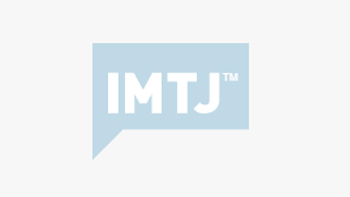Official South Korean tourist organization KTO expects medical tourist numbers to reach 598,000 in 2015 and 998,000 in 2020.With such a surge in numbers, the revenue from medical tourism is expected to jump to 3.5 trillion won in 2020 from 1.01 trillion won in 2013. The KTO expects the amount of average per capita spending in Korea by medical tourists to grow from 2.53 million won in 2013 to 3.56 million won in 2020.
Official South Korean tourist organization KTO expects medical tourist numbers to reach 598,000 in 2015 and 998,000 in 2020.With such a surge in numbers, the revenue from medical tourism is expected to jump to 3.5 trillion won in 2020 from 1.01 trillion won in 2013.
The KTO expects the amount of average per capita spending in Korea by medical tourists to grow from 2.53 million won in 2013 to 3.56 million won in 2020. It predicts that the number of medical tourists from foreign countries could reach about 1 million and generate revenue of 3.5 trillion won (US$3.2 billion) by 2020.
Since the country launched a promotional campaign to promote medical tourism in 2009, the number of people visiting Korea for treatment has increased by 38.4 % annually. The number of hospitals and clinics involved in the industry has grown to 3800 this year.
In 2012 159,000 people from 188 countries visited Korea for medical treatment. The Korea Tourism Organization claims that this rose to 399,000 in 2013 and will reach 998,000 in 2020. While there is general agreement that medical tourism is growing, not everybody believes the KTO figures as if true they would mean a huge increase from 2012 to 2013 of an additional 140%.
Soon after the KTO figures had spread globally, the Health Ministry said that just over 200,000 foreigners visited Korea for medical treatment in 2013, but it will take a while for exact numbers to be known. That the KTO managed to announce the 2013 figures two months before the end of 2013, speaks for itself.
The key reason for the increasing numbers and bullish predictions is the growing popularity of Korea’s medical services in foreign countries, particularly China. The China Daily reported that 62% of 31,000 Chinese people who went in South Korea on 15-day medical tourism visas in 2012 had cosmetic surgery.
South Korea saw its surplus in its health tourism account top US$100 million in 2013, largely thanks to increased spending by overseas travellers seeking healthcare and medical services in the country. According to data compiled by the Bank of Korea, the country’s income from medical tourism reached $187 million in the first 11 months of 2013, up 35.3 % from $138 million a year earlier, marking the biggest tally since the central bank began to keep related data in 2006.The income outpaced local residents’ overseas spending on medical travel, which amounted to $86.4 million during the same period, down 11.2 % from a year earlier. So the country logged a surplus of $101 million in health tourism in the January-November period, compared with a surplus of $41 million a year earlier.
South Korea’s medical travel income came in at $59 million in 2006 but has increased steadily on the back of the advancement of medical technology and regional governments’ efforts to attract overseas patients. The income gained steadily from $69.8 million in 2007 to $89.5 million in 2010. The comparable figures for 2011 and 2012 were $131 million and $149 million. South Korean residents’ overseas expenditures on health-related services reached a peak in 2007 at $137 million and then fell to $96 million in 2009 before rebounding to $109 million in 2010.They spent $78.5 million and $105 million, respectively, in 2011 and 2012. The country logged its first surplus in medical tourism in 2011 at $52.2 million. In 2012, the surplus fell to $43.8 million.
2014 saw a head of state go to South Korea for medical treatment. Armenian president Serzh Sargsyan had rejuvenation treatment at Chaum Center in Gangnam. Chaum has drawn many rich people from around the world who go to Seoul in their private jets. Among them have been Chinese and Canadian business tycoons, the prime minister of Kazakhstan and Saudi and UAE royalty.








 ©2024 All rights reserved LaingBuisson
©2024 All rights reserved LaingBuisson 


